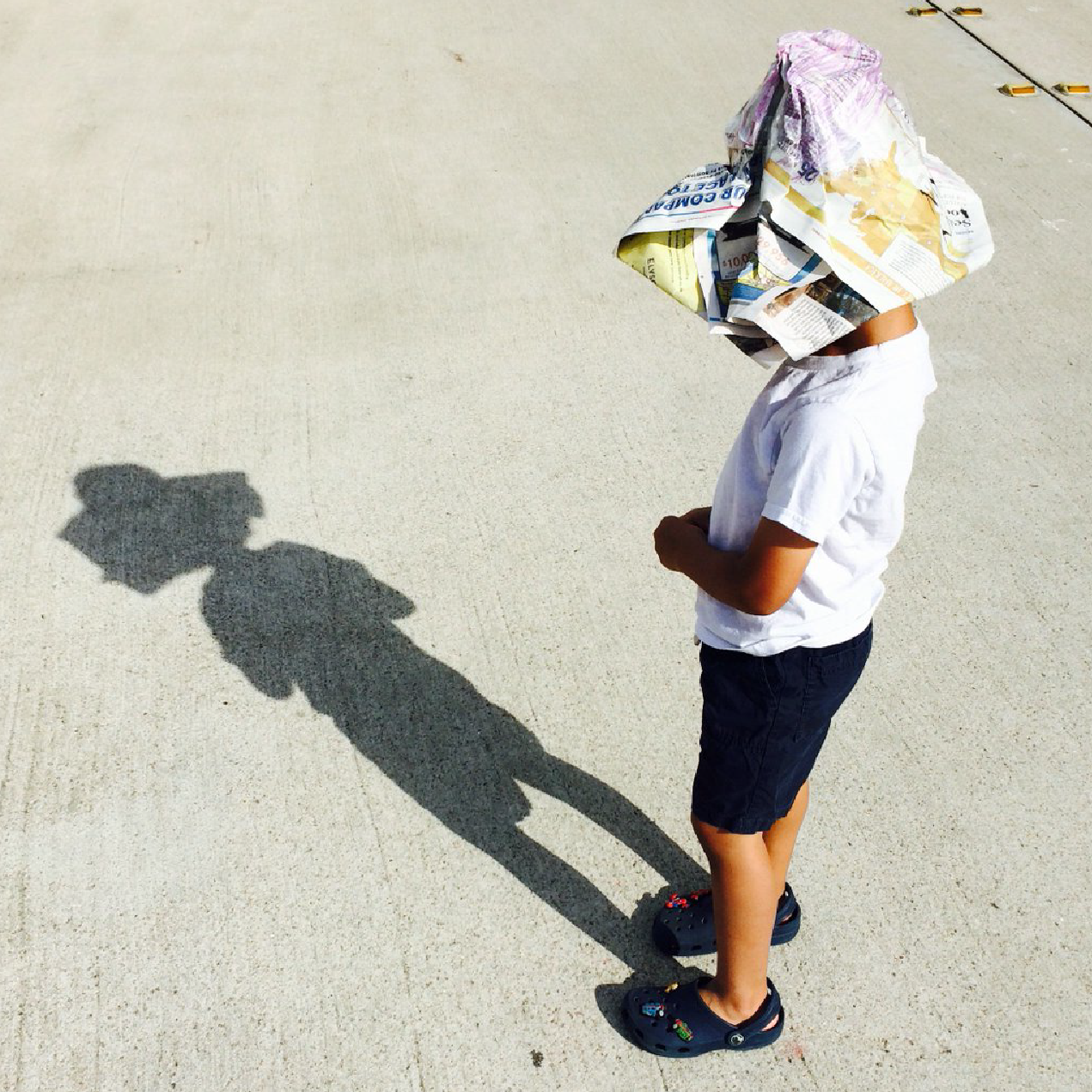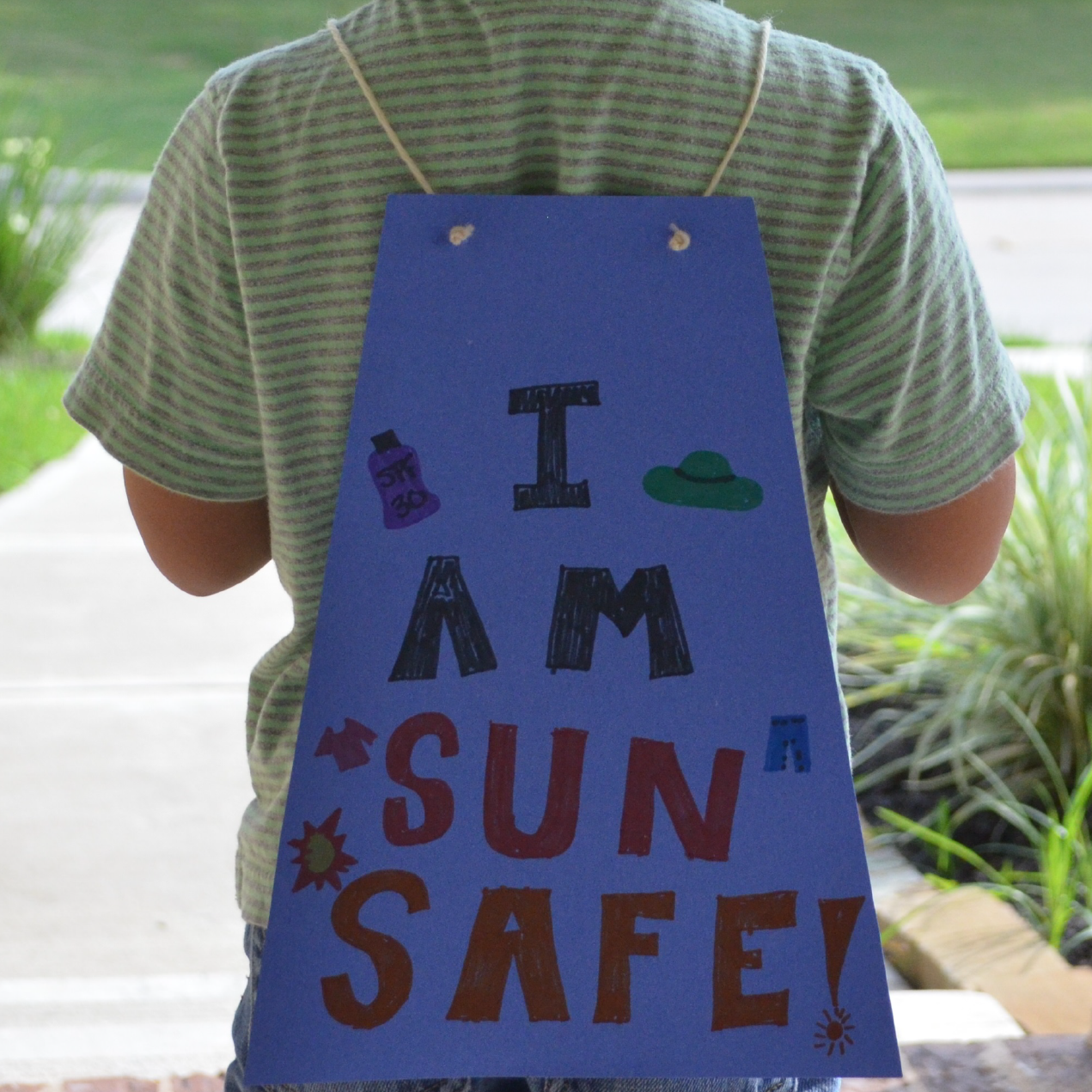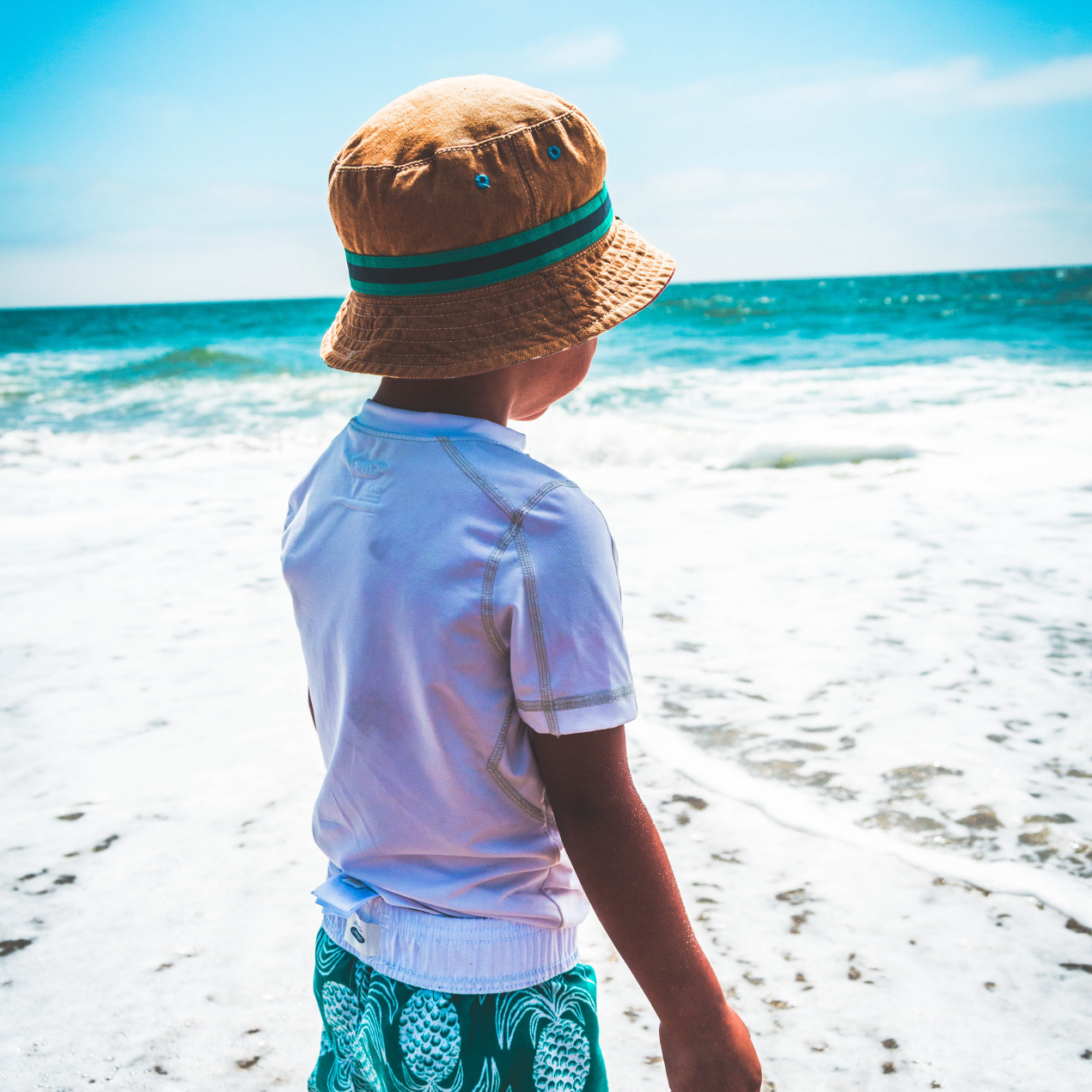As we approach long summer days filled with more time spent outdoors, one of the most important things we can do for our children is teach them how to be sun safe. The sun emits powerful ultraviolet (UV) rays that can harm our skin and potentially lead to skin damage, sunburn, and even skin cancer.
According to the American Academy of Dermatology, one blistering sunburn during childhood can double a person’s chance of developing melanoma, the most deadly type of skin cancer. What’s more, half of our lifetime sun exposure occurs before the age of 18; therefore, it is beneficial to engage children early to foster better sun safety behaviors across the age continuum and help reduce their lifetime risk of developing skin cancer.
Getting children to practice sun-safe behaviors may not always be easy. So, it becomes even more important to make sun safety fun and something children want to do. As a parent of two young children, a key priority in my household is to make sun safety relatable and easy to understand. As an example, I explain that sun safety protects our skin much like wearing a helmet protects our heads or brushing teeth protects our teeth and gums. The following are additional strategies to consider this summer and year-round.
Model Behavior
Sunburn during adulthood can also lead to increased skin cancer risk. Practicing sun safety will show children that you think sun protection is important for yourself and for them.
Use sunscreen and lip balm
• Use broad-spectrum sunscreen, SPF 30 or higher
• Apply sunscreen at least 30 minutes before going outside
• Re-apply sunscreen every 2 hours, and soon after sweating or swimming
• Spread sunscreen generously (enough to fill a golf ball or shot glass) from head to toe and don’t forget the nose, ears, neck, and back of the hands.
Parent tip: To make sunscreen application engaging for your child, make fun shapes or write your child’s name out with the sunscreen on their arms and legs. Depending on your child’s age, ask them to spread the lotion evenly on their skin.
Cover up
Wear wide-brimmed hats, sunglasses that block 99-100% of UV rays (check the label), and protective clothing such as sleeved shirts (not tank tops) and knee-length or longer shorts, skirts, or dresses.
Parent tip: For maximum sun protection, consider having your child wear UV-protective clothing especially at the pool or beach.
Find Shade
Aim to plan outdoor activities in shaded areas whenever possible. If there is no shade, be creative – use umbrellas, tarps, or tents.
Note: Between 10 am and 4 pm, the sun’s rays are more harmful. Ensure that you and your child are extra-protected during this time by engaging in all sun safety behaviors described above. Outdoor activities can also be planned for earlier or later in the day to avoid the midday sun, when possible.
Make Sun Safety Fun
The University of Texas MD Anderson Cancer Center developed Ray and the Sunbeatables®: A Sun Safety Curriculum, which features superhero characters who travel around the world using their sun safety superpowers of applying sunscreen, finding shade, and wearing wide-brimmed hats, protective clothing, and sunglasses.
Consider relating sun safety to the Sunbeatables superhero characters or other characters that children enjoy. Use songs (the Sunbeatables Program includes a few known household tunes such as “Are You Sleeping?”) and be creative with sun safety games.
Parent tip: Use shadow length to demonstrate when it is safe to be outside. During early morning and late afternoon, shadows are longer. During 10 am to 4 pm, shadows are shorter or there is no shadow. This means that the sun is high in the sky, directly overhead, and the sun’s rays are more harmful. Encourage your child to come inside or play in the shade when their shadow is shorter.
Remember that sun safety is critical year-round, even on cloudy or cold days as UV rays can still reach the skin. Advocate for sun safety at your child’s school (like encouraging shade structures be placed in outdoor play areas, updating sun safety policies, etc.) and ask the school to learn more about sun safety initiatives as well as the free resources currently available to them. Work with your child’s teachers and emphasize the importance of sun safety both at school and at home. This is yet another important way that you can positively impact your child’s health for the long-term.
Sun Safety Resources
Sunbeatables Program: An evidence-based sun safety program targeted to preschool through 1st grade students, developed by MD Anderson
Be Sunbeatable™: A sun safety program that builds upon key messages from the Sunbeatables Program targeted to 2nd through 5th grade students; co-developed by MD Anderson and Scholastic
Reducing the incidence of melanoma through primary and secondary prevention initiatives is among one of the shared goals and key partnership strategies between MD Anderson’s Melanoma Moon Shot™ and the cancer prevention and control platform. The Melanoma Moon Shot™ and platform are part of MD Anderson’s Moon Shots Program™, a collaborative effort to accelerate the development of scientific discoveries into clinical advances that save patients’ lives.







